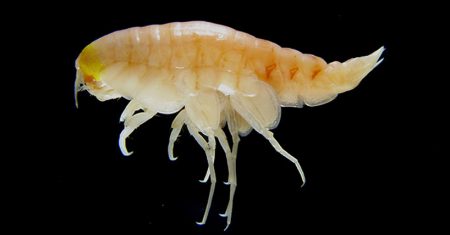
February 14, 2017 – On Valentine’s Day I want to talk about love of planet. In this year’s January-February issue of Discover magazine, a review of the 100 top science stories of 2016 highlighted, in the 96th position, the arrival of the Anthropocene. Nathaniel Scharping, the author of this contribution, stated, “humanity has etched its existence into the rock layers beneath our feet.” A working group of the International Union of Geological Sciences, stated Scharping, have recommended that we formally adopt the Anthropocene and end the Holocene geological era that precedes it.
Evidence of the Anthropocene can be found in our impact on the rock strata we humans are laying down today embedded with plastic debris and other pollutants. We call these new rocks, plastiglomerates. More disturbing, however, is the chemical evidence recently uncovered of human-created pollutants found in the deepest ocean trenches of our planet.
In a study done by Newcastle University scientists, a sampling of crustaceans from the Mariana and Kermadec trenches in the Pacific Ocean show the presence of polychorinated biphenyls (PCBs), and polybrominated diphenyl ethers in the fatty tissue of these animals.
States lead author, Dr. Alan Jamieson, Marine Ecologist, “We still think of the deep ocean as being this remote and pristine realm, safe from human impact, but our research shows that, sadly, this could not be further from the truth.” The sampling from these crustaceans indicates contamination levels equal to some of the most polluted surface areas in the Pacific Ocean basin.
The likely source of deep sea pollution is contaminated plastic debris, and dead animals containing absorbed industrial chemicals, that find their way to the ocean bottom and get ingested by the local fauna. “The fact that we found such extraordinary levels of these pollutants in one of the most remote and inaccessible habitats on earth really brings home the long term, devastating impact that mankind is having on the planet…..It’s not a great legacy that we’re leaving behind.”
The complete study can be found online in the journal, Nature: Ecology & Evolution, entitled, “Bioaccumulation of persistent organic pollutants in the deepest ocean fauna,” published on February 13, 2017.
Findings like these are part of the accumulating evidence that shows we humans are changing the nature of life on this planet. It is inevitable that the 7.5 billion people on this planet plus the accompanying aspects of our civilization are bound to leave an imprint. But in the age of humans, the Anthropocene, we owe the planet the love it deserves for giving us the only place in the Universe where we can safely exist. Why are we screwing with it?









